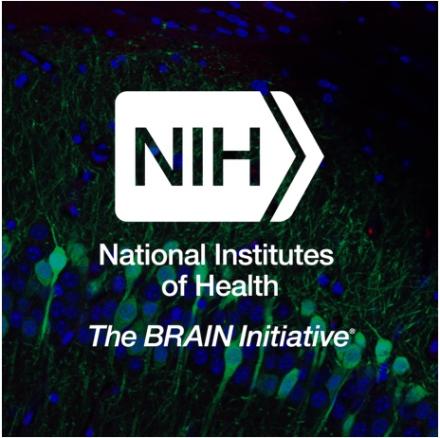New deep brain stimulation device coupled with powerful AI may improve therapy for treatment-resistant depression
News

BRAIN News Spotlight
Researchers Fully Map Neural Connections of the Fruit Fly Brain
NIH-supported milestone will advance understanding of brain processes in larger animals.
View Spotlight Article- Human Neuroscience
- Neural Recording & Modulation
- Neuroimaging Technologies Across Scales
- Tools/Tech for Brain Cells/Circuits
The findings shed light on how the brain processes music and could help brain-computer interfaces to produce more natural-sounding speech.
- Human Neuroscience
Early NIH-funded trial is first step towards development of a potential stroke treatment
- Human Neuroscience
- Neural Recording & Modulation
NIH-funded study shows preliminary results that could lead to new pain treatments
Researchers mapped out all the nerve connections in a larval fruit fly brain.
An NIH-funded research team led by Dr. David Olson from the University of California, Davis previously developed a sensor that could distinguish which drugs that bind to 5-HT2AR have hallucinogenic properties and which don’t.
Detecting the earliest signs of Alzheimer’s disease (AD) in middle-aged people and tracking its progression over time in research studies continue to be challenging.
In a small study, researchers used a device that stimulates the spinal cord to restore arm and hand mobility in two stroke patients, allowing them to perform daily life activities, such as using a fork to eat a meal. The study, published in Nature Medicine(link is external), was funded by the National Institutes of Health’s Brain Research Through Advancing Innovative Neurotechnologies®(BRAIN) Initiative.
New research funded by the NIH BRAIN Initiative sheds light on how we organize and store memories
Today the National Institutes of Health announces two transformative projects supported by the Brain Research Through Advancing Innovative Neurotechnologies® (BRAIN) Initiative: The BRAIN Initiative® Cell Atlas Network (BICAN) and the Armamentarium for Precision Brain Cell Access.
In the News
The BRAIN Initiative Alliance (BIA) aims to spread the word about BRAIN-funded scientific advancements. Visit the BIA website for up-to-date news coverage about the impact of BRAIN Initiative research.
The BRAIN Blog
The BRAIN Blog covers updates and announcements on BRAIN Initiative research, events, and news. Hear from BRAIN Initiative trainees, learn about new scientific advancements, find out about recent funding opportunities, and more.
Last reviewed on July 02, 2025
